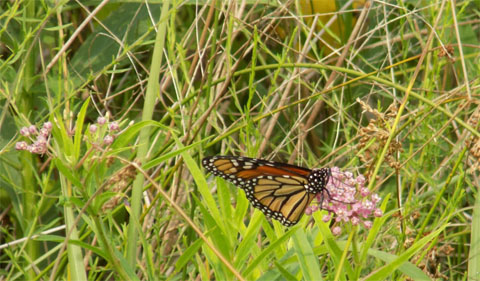
Monarch butterfly feeding on Asclepias incarnata, commonly known as swamp milkweed.
By Tag Hauschild ’18
Plant Biology intern at the U.S. National Arboretum
Pollinator populations are on the decline in the United States. Bees are not the only pollinator experiencing dwindling numbers; butterflies are another species that are being heavily affected.
While butterflies are not as efficient at pollination as bees, their role as pollinators are still important. Butterflies are considered an indicator species, their sensitivity to things like pollution and climate change can inform us about conditions within their native ecosystems, and the surrounding environment.
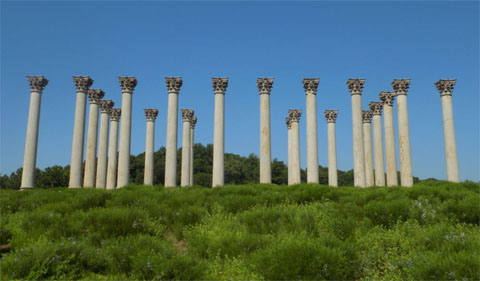
Capitol columns at the US National Arboretum
The Fern Valley Native Plant Collection at the U.S. National Arboretum is teeming with butterflies, and it’s not just because the plant collection is so meticulously maintained.
The abundance of butterflies has a lot to do with the host plants growing there. Host plants play an essential role in the development of the butterfly, and Fern Valley is full of them. A host plant is a plant that provides food and shelter for butterfly larvae.
Some caterpillars will only eat a few plants from a particular family, and sometimes only a particular genus. Many caterpillars will often stay on the same plant they hatch on, eating the host plant, and finally pupating on it once they have fully matured.
While the initial relationship between the caterpillar and the host plant is parasitic, host plants are able to heal before the butterfly emerges to greet the world. Newly emerged butterflies make amends by leaving their host and pollinating surrounding plants, sometimes their own host plants.
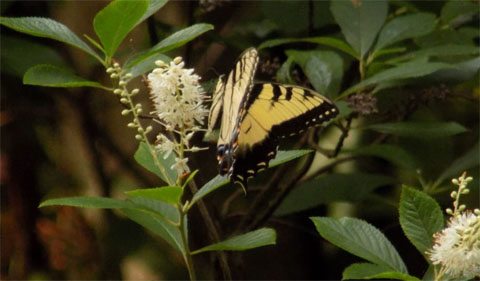
Eastern Tiger Swallowtail feeding on Clethra alnifolia, commonly known as sweet pepperbush.
This summer I have been working with the U.S. National Arboretum on an informational sign project In the Fern Valley Native Plant Collection. The focus of the project has been on creating signage that informs the public of the relationship between host plants and the native pollinators that they provide food for.
We hope that by informing the public about this important relationship that we can begin to promote the conservation efforts of both native host plants and butterflies.
If you are in the D.C. area next summer, I encourage you to come out to the U.S. National Arboretum and check out the seasonal sign exhibit. Here are a few of the signs that will appear next summer in the collection.
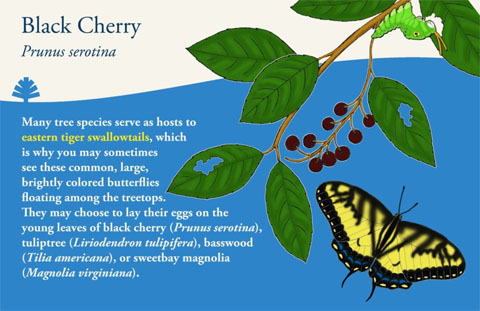
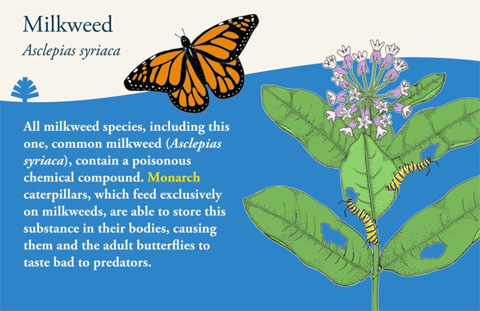
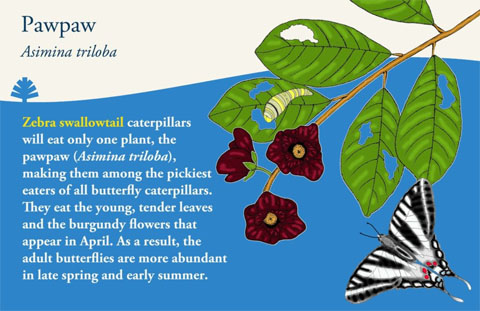
For more information on the Fern Valley Native Plant Collection or the U.S. National Arboretum you can visit their website here.



















Comments